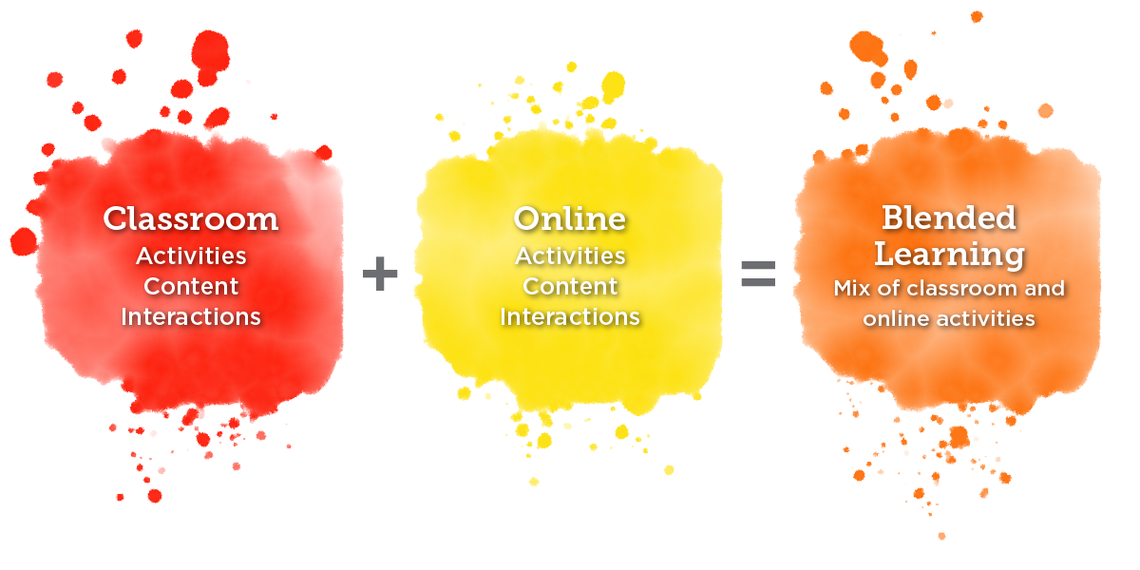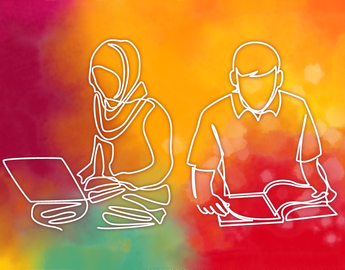
Lesson 1: Getting started with blended learning
What is blended learning?
Blended learning is when a course design intentionally integrates and leverages the strengths of both the physical and online environments. In a blended course, class time is often reduced or modified with the integration of online asynchronous or synchronous activities and offline activities. Focusing on pedagogy first to meet course learning outcomes, blended learning is “the organic integration of thoughtfully selected and complementary face-to-face and online approaches and technologies” (Garrison & Vaughan, 2008, p. 148). When compared to traditional classroom-based learning, research has shown that blended learning can have positive impact on student learning outcomes and satisfaction (Bernard et al., 2014; Melton et al., 2009; Nortvig, 2018; Ryan et al., 2016).

Why blended learning?
-
Flexibility in space and time for both students and instructor
-
Increased accessibility and student control to content and course work
-
Provide multiple means of interactions
-
Opportunity for innovative pedagogy and use of learning technology
-
Increased sense of community and belonging
(Melton et, al, 2009; Bernard et al., 2014)
Key terms to know
Before moving forward, let’s review a few key terms that will appear frequently in this module.
Refers to in-person classrooms, also including tutorials, labs, fieldwork, collaborative activities, and projects in a face-to-face learning environment.
Refers to computer, internet, or other technology. There are two types of online learning – online synchronous and online asynchronous.
Refers to online learning through video conferencing tool, such as Zoom. Zoom meeting is like a virtual classroom where instructors could present content and answer students’ questions immediately. Interactions happen in real time.
Refers to learning that occurs through online platforms and channels without real-time interaction.
The thoughtful integration of both physical and online spaces to create an interactive and engaging learning experience.
How students interact with each other, course material such as content and activities, and the instructor.
Refers the alignment or connection between course learning outcomes, assessments, activities, content and technology.
How to get started with blended learning
Focus on pedagogy first
Start with reviewing course learning outcomes to guide your blended design.
Get prepared
Make sure the online material is ready to go for when the course starts, including the course outline, schedule and due dates.
Consider interactions
Incorporate different types of interactions (student-student, instructor-student, student-content).
Consider the big picture
Both the online and classroom environments need to be designed in conjunction.
Make learning engaging
Build a community to foster student engagement.
Additional resources
The University of Waterloo's Centre for Teaching Excellence poses ten reflective questions for you to consider when designed a blended course.
The University of Central Florida shares a checklist to help you implement your blended course.
The University of British Columbia highlights some key tasks for you to check to make sure that you are going to offer a high-quality blended learning experience.
Lesson checklist
-
Identify the purpose of using blended learning to support student learning
-
Determine where to get started with blending your course
References
Bernard, R. M., Borokhovski, E., Schmid, R. F., Tamim, R. M., & Abrami, P. C. (2014). A meta-analysis of blended learning and technology use in higher education: from the general to the applied. Journal of Computing in Higher Education, 26, 87–122
Garrison, D. R., & Vaughan, N. (2008). Blended Learning in Higher Education: Framework, Principles, and Guidelines. San Fransisco: Jossey-Bass.
Garrison, D. R., & Kanuka, H. (2004). Blended Learning: Uncovering Its Transformative Potential in Higher Education. The Internet and Higher Education, 7, 95-105. 10.1016/j.iheduc.2004.02.001.
Melton, B. F., Bland, H. W., and Chopak-Foss, J (2009). Achievement and Satisfaction in Blended Learning versus Traditional General Health Course Designs. International Journal for the Scholarship of Teaching and Learning, 3(1), Article 26. 10.20429/ijsotl.2009.030126
Nortvig, A. M., Petersen, A. K., & Balle, S. H (2018). A Literature Review of the Factors Influencing E- Learning and Blended Learning in Relation to Learning Outcome, Student Satisfaction and Engagement. The Electronic Journal of e-Learning, 16(1), 46-55.
Ryan, S., Kaufman, J., Greenhouse, J., She, R., & Shi, J. (2016). The effectiveness of blended online learning courses at the community college level. Community College Journal of Research and Practice, 40(4), 285-298. 10.1080/10668926.2015.1044584



